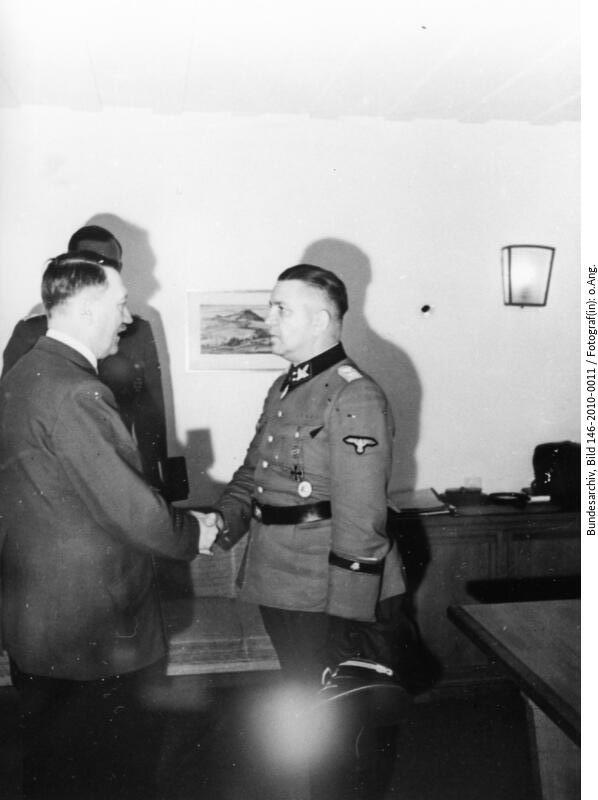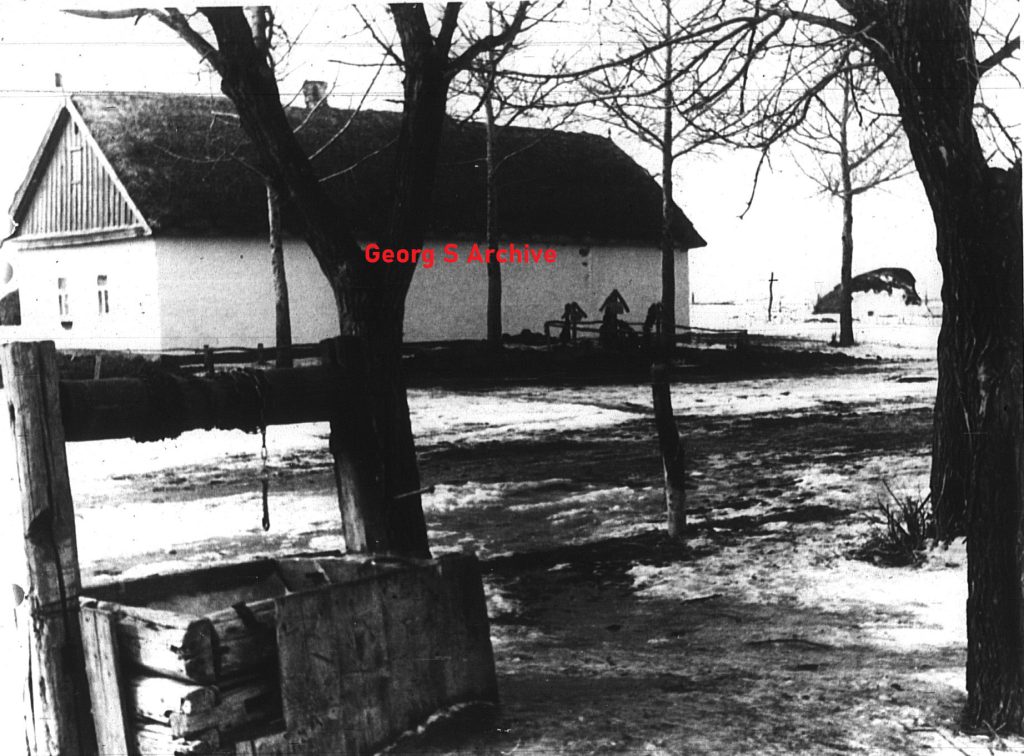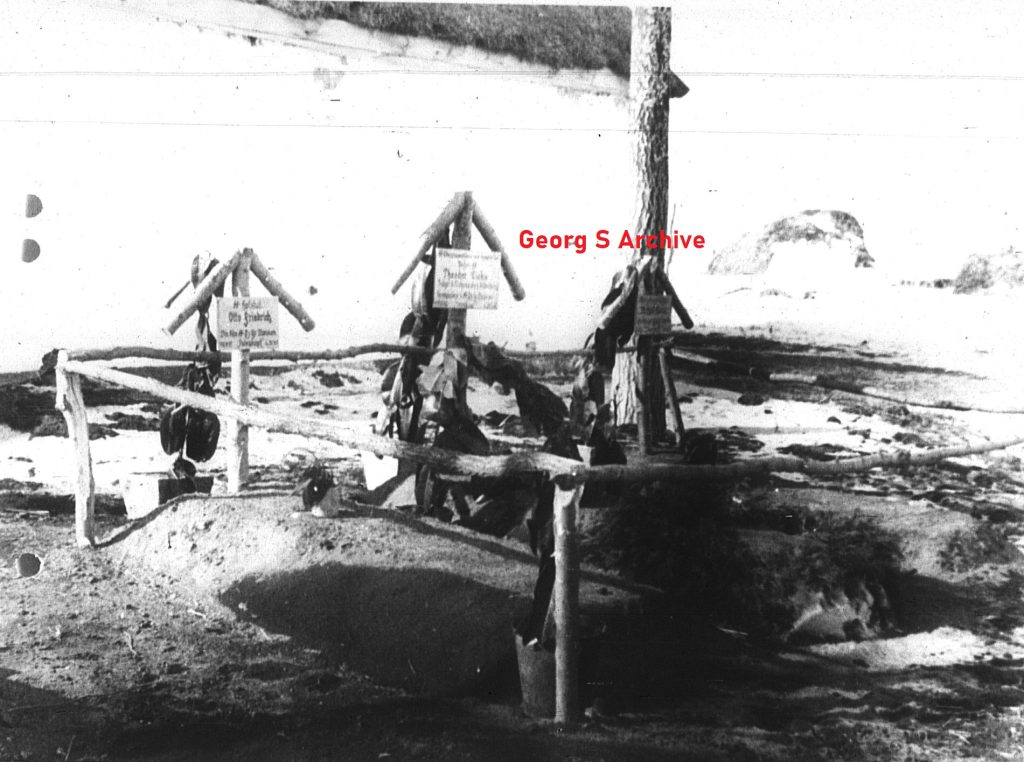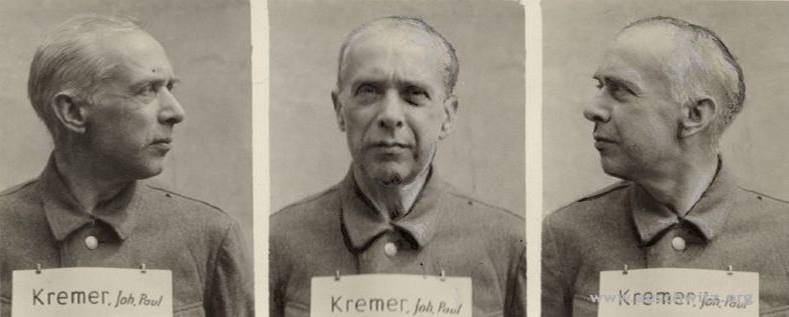New vs Old site
Hello,
I see through Analytics that many search for pages that are still on the old page. I will continue to transfer the info today.
But if you are in a hurry and need info fast please visit www.old axishistory.com
Best regards
Georg
Oberstleutnant Max Baeßler (1893-?)
member and forum staff Askropp, writes a lot on the subforum Dieter Zinke Axis Biography . If you are looking for officer why dont take a look. You might find what you are looking for. Below you find almost anything you need about Max Baessler.

Max Robert Karl Baeßler
* 03.02.1893 Pleische / Niederschlesien
† [?]
Vater: Gustav Baeßler (1863-?), Lehrer
Mutter: Anna Baeßler, geb. Fabich (1869-1936)
30.09.1919 Heirat mit Else Woide (1896-?)
1 Sohn (*1920), 1 Tochter (*1922)
02.10.1911 Kanonier
27.01.1913 Gefreiter
09.09.1914 Unteroffizier
01.04.1917 Sergeant
01.07.1920 Feuerwerker
13.03.1924 Charakter als Leutnant beim Zeugamt
24.03.1937 Oberleutnant (WE) mit RDA vom 01.12.1927
01.03.1938 Hauptmann (WE)
01.11.1940 Major (WE)
10.01.1944 Major (W) mit RDA vom 01.11.1940
01.04.1944 Major mit RDA vom 01.11.1940 (73)
09.11.1944 Oberstleutnant
02.10.1911 Eintritt in die 2. (r) / Feldartillerieregiment 42 (Schweidnitz)
01.10.1913 in der 2. (r) / Feldartillerieregiment 35 (Deutsch Eylau)
08.08.1915 erkrankt, danach Lazarett
05.10.1915 zugeteilt der Ersatzabteilung des Feldartillerieregiments 42
05.12.1915 in der 5. / Feldartillerieregiment 42
13.02.1917 erkrankt, danach Lazarett
01.04.1917 zugeteilt dem Ersatzabteilung des Feldartillerieregiments 42
03.07.1917 beim Artilleriedepot Breslau
15.03.1918 im Stab des Generalkommandos 59
28.05.1918 beim Artilleriedepot Breslau
01.01.1921 in der 14. (r) / Artillerieregiment 3 (Sprottau)
01.11.1921 an der Artillerieschule (Jüterborg)
01.12.1921 beim Zeugamt Berlin-Spandau
02.11.1922 kommandiert zur Inspektion für Waffen und Gerät (bis 30.04.)
30.09.1923 ausgeschieden
1926-1936 Angestellter der Nationalarchiv München Verlags-GmbH
01.07.1931 Eintritt in die NSDAP
24.03.1937 wieder angestellt bei der Luftmunitionsanstalt Lamitsch
01.05.1937 bei der Luftmunitionsanstalt Hesedorf
04.10.1940 stellvertretender Leiter der Luftmunitionsanstalt Rochau
01.02.1941 bei der Luftmunitionsanstalt Krappitz
10.10.1914 EK II
15.02.1921 Schlesischer Adler II. und I. Stufe
15.08.1935 Ehrenkreuz für Frontkämpfer
SS-Ogruf Theodor Eicke
This SS-General if someone tears up opinions, was he a war criminal or a clever organizer with a good side? If you read post-war literature, the veterans seem to have praised him highly. They gave him the epithet “Papa” early on.

the fact is that he was the one who organized how a German concentration camp was built, why I write in German is that concentration camps were not a German invention, but created by the English during the war in South Africa, the so-called Boer war.
Eicke’s organization meant that a concentration camp had 6 departments, as well as a guard unit in the form of an SS-Totenkopfverbände. Ab I. In was the commandant’s and its adjutant’s department. Abt II, the camp was the “Gestapo”, this was independent of the commandant and other staff. Abt III. Where the camp itself in German was called “Schutzhaftlager” this department had its own commandant who had the title “Schutzhaftlagerführer”. Department IV was the administration and had everything to do with the camp’s economy. Dept. V was the domain of the doctors. They were often also responsible for the troops that were around the camp. Department VI was the political unit responsible for ensuring that the troops at the camp received the right training in National Socialism. The unit that guarded the camp was first called “Wachsturmbann” to later get the title SS-Totenkopfverbände, there were four such units 1, 2, 3 and 4 these four were responsible for guarding the camp. Before the war, the soldiers in the SS-TV units were on a rolling schedule, one week in the towers or around the fence and three weeks of military exercises. During a conversation with a veteran who admitted that he had served in KL Buchenwald between 1938-1940, when asked what it was like to guard the camp, the simple answer was “it was really boring”.
But enough about the camps, after Eicke created this model, in 1936 he was appointed supreme director of the SS-TV and Concentration Camps, his new position meant that he settled just south of KL Sachsenhausen (the villa remains and is today a youth hostel). They also built a large complex in the shape of a T, hence the name “T-Gebäude”, this building also remains, it contains a small museum otherwise the Finance Department of the state of Brandenburg takes possession of the rest of the building.
At the end of the war in 1939, parts of the SS-TV participated in the battles in Poland, mainly 2.SS-TV Brandenburg, were involved and they are said to have committed one of the first war crimes of the war. For Eicke this meant little and he praised all his soldiers. Eicke was a leader who in duty he demanded blind obedience, while in his spare time he was one of his soldiers and there are plenty of pictures of Eicke sitting in the middle of his unit smoking his pipe and saying hello to all his soldiers, which even they could do under the relaxed forms. But pity the one who had the nerve to say hello to his general in the service. Then they quickly risked having to put on the striped clothes and see themselves as prisoners in one of the camps.

I have documents where soldiers had to leave their post at 1.SS-TV Oberbayern (Dachau) to see themselves transported under guard to KL Buchenwald to see themselves there as prisoners.
Eicke’s leadership was not looked upon kindly by other senior leaders within the SS and the party, he often got into arguments with his superiors and not infrequently RFSS Himmler had to step in, either to reprimand Eicke, but also sometimes to give him the right and with a try to get Eicke to accept that certain things must work in certain ways. This was something of a common thread in Eicke’s life. But still he was admired by his soldiers, both privates and officers.
in October 1939, the SS-Totenkopf Division was formed in Dachau, which had been emptied of prisoners only to accommodate all the new recruits and soldiers. The prisoners were mainly transferred to KL Mauthausen. They began training hard for upcoming battles, and the SS-Totenkopf Division received its baptism of fire in the Battle of France. There, the SS-Totenkopf committed a war crime that echoed far up among the generals of the regular army. What happened was that Fritz Knöchlein executed a unit from the English army at La Paradis, Eicke protected his soldiers and thought it was not so remarkable. But after pressure from both the RFSS and others, Fritz Knöchlein was withdrawn from the front. One might think that this Knöchlein would fall out of favor, but no he was later decorated with the Knight’s Cross and reached the rank of lieutenant colonel in the Waffen-SS (SS-Obersturmbannführer).
After the Battle of France, the SS-Totenkopf Division had a relatively quiet period, being used as garrison troops in France while training under the watchful eye of Eicke.

When the Battle of Barbarossa began, the SS-Totenkopf Division was part of the attack and they advanced through Poland (the Russian occupied territories) Lithuania, parts of Latvia towards the great Lake Ilmensee, a lake that would become very associated with the SS-Totenkopf Division and Theodor Eicke.
Even times Eicke was transferred to Hitler’s headquarters, he constantly requested transfers to return to his soldiers who were enclosed in what came to be known as the “Demjansk Pocket”. After eternal nagging from Eicke, who kept sending telegrams to SS-Gruf Simon and others. so he finally got to return to his beloved Division. he regained the lead and immediately launched a mass counterattack against the Russians. Under Eicke’s leadership, many soldiers and officers received high honors in the battles that followed. Fritz Christen who was part of the SS-Totenkopf-Pz.Jg.Abt was the first private to be awarded the Knight’s Cross. But countless others received this high distinction.
Demjansk would also mean that the story of Theodor Eicke would end, during a reconnaissance flight with his Fiesler Storch, his aircraft was shot down by the Russians and all on board died. This happened on February 26, 1943. The soldiers of the SS-Totenkopf Division did not believe it was true and a rescue operation was put in place, if not to recover the bodies. Eicke hated the Russians and letting him fall into the hands of the Russians was completely out of the question for the soldiers of the “SS-Totenkopf”
Theodor Eicke left behind a wife and daughter, his son had died a year earlier as a lieutenant in a Panzer unit. his daughter was also married to SS-Ostubaf Karl Leiner. Eicke’s wife was given permission to continue living in their villa south of KL Sachsenhausen.
If Theodor Eicke would have survived the war, he sure would have been prosecuted and condemed for warcrimes.
The first grave for Theodor Eicke and the two other men who died in the same plane after they was shot down,





//Georg
Major Günther Rall

Günther Rall was born in Gaggenau, the German Empire, in March 1918. Rall grew up in the Weimar Republic. In 1933 the Nazi Party seized power and Rall, deciding upon a military career, joined the Army in 1936 to train as an infantry soldier. Rall transferred to the Luftwaffe soon after and he qualified as a fighter pilot in 1938.
In September 1939 World War II began with the German invasion of Poland. Rall was assigned to Jagdgeschwader 52 (JG 52—52nd Fighter Wing) and flew combat patrols in the Phoney War period on the Western Front. Rall flew combat missions in the Battle of France and Battle of Britain, claiming one enemy aircraft destroyed in May 1940. Rall’s wing sustained heavy casualties and the then-22 year old was appointed to Staffelkapitän (squadron leader). He then served in the Balkans Campaign in April and May 1941 without success.
In June 1941, JG 52 moved to the Eastern Front, where it remained from Operation Barbarossa until the end of the war. Rall claimed his first successes in the air defense of Romania. In November 1941, he was shot down, wounded and invalidated from flying for a year. At this time Rall had claimed 36 aerial victories. His achievements earned him the German Cross in Gold in December 1941.
Rall returned in August 1942 and was awarded the Knight’s Cross of the Iron Cross on 3 September 1942 for 65 enemy aircraft shot down. By 22 October Rall had claimed 100 and received the Knight’s Cross with Oak Leaves. He reached 200 in late August 1943. On 12 September 1943 he was awarded the Knight’s Cross of the Iron Cross with Oak Leaves and Swords, the second highest military award in Nazi Germany at the time of the presentation. By the end of 1943 Rall had achieved over 250, the second flier to do so after Walter Nowotny did in October 1943.
In April 1944 Rall left JG 52 and the Eastern Front. He was given command of II. Gruppe (2nd group) of Jagdgeschwader 11 and served in the Defense of the Reich where he was wounded for a third time. In November 1944 Rall was appointed as an instructor and flew captured Allied fighter aircraft in order to prepare instruction notes on their performance to German fighter pilots. Rall ended the war with an unsuccessful stint commanding Jagdgeschwader 300 (JG 300—300th Fighter Wing) near Salzburg, Austria, where he surrendered in May 1945.
During World War II Rall was credited with the destruction of 275 enemy aircraft in 621 combat missions. He was shot down five times and wounded on three occasions.[2] Rall claimed all of his victories in a Messerschmitt Bf 109, though he also flew the Focke-Wulf Fw 190 operationally. All but three of his claims were against Soviet opposition.
Rall joined the West German Air Force in 1956, served as Inspector of the Air Force from 1971 to 1974, and as the German representative to the NATO Military Committee until 1975. After his retirement Rall became a consultant. Among his post-war achievements was the presentation of the Order of Merit of the Federal Republic of Germany. It was awarded to him for his post-1945 service.
Doctors of the SS/Waffen-SS
On the forum and the subforum SS u polizei, member Orlov have started a topic were he list biographical data and info regarding Doctors of different positions of the SS and Waffen-SS, as an example we show the story of Johann Paul Kremer. You can see the thread here – Medical Officers of the SS

Johann Paul Kremer (26 December 1883 – 8 January 1965) was born in Stellberg. He studied in Heidelberg, Strassburg as well as Berlin; he received his philosophy degree in 1914 and his medical degree in 1919. He also studied natural science and mathematics. He was the “assistant surgeon at the surgical clinic of the University, Charité, the ward of internal diseases of the Municipal Hospital Berlin-Neukölln, the surgical clinic of the University of Cologne and prosector in the Institutes of Anatomy in Bonn and Münster. He became Dozent of anatomy in 1929 and was promoted there in 1936 to be professor in commission. At the same time, he was commissioned to lecture on the science of human hereditariness”. He also did some writing: he mentions two articles that he wrote in the diary he kept, the first being “Inherited or Acquired? A Noteworthy Contribution to the Problem of Hereditariness of Traumatic Deformations” and the second titled “New Elements of Cell and Tissues Investigations”.
Medical experiments in KZ Auschwitz
The main priority of SS doctors at concentration camps throughout German-occupied Europe was not to provide basic medical services to prisoners, but rather to give the appearance of competent medical care. Following the full-scale implementation of the Final Solution, much of their time was occupied with concentration camp exterminations, sorting/selection of the newly-arrived (primarily Jewish) prisoners (e.g. for work, experimentation, or immediate extermination), direct observation of executions and gassings, experimentation, and the fabrication of causes of deaths on prisoner death certificates. The experiments conducted by SS doctors were done for three main reasons:
1) to research methods to improve the health and survivability of soldiers;
2) to lay the groundwork for post-war scientific research and
3) to carry out the dictates of the racial policies of the National Socialist Party. Some experiments were also done at the behest of pharmaceutical companies and medical institutes, for the doctors’ own research interests, and to benefit the doctors’ personal careers.
Kremer was particularly interested in the effects of starvation on the human body, especially on the liver, and because Kremer was responsible for examining the prisoners that sought admission to the camp infirmary, he was able to personally select the prisoners that he believed would make good test subjects for his experiments. He often performed autopsies in order to extract samples from the liver, spleen and pancreas. On several occasions in his diary, he mentions the extraction of organs and tissues (which he called “living-fresh material”) from living victims.
On 3 October 1942 SS doctor Johann Paul Kremer wrote in his diary: “Today fresh living material from the human liver and spleen as well as pancreas fixed, along with lice from typhus patients fixed in pure alcohol. In Auschwitz (city), whole streets are struck down with typhus. So today I had the first serum injection against abdominal typhus administered to me. SS-Obersturmführer Schwarz is sick with typhus!”.
Also on October 15, 1942 he writes, “Living-fresh material of liver, spleen and pancreas taken from an abnormal individual.” Kremer’s diary contains descriptions of at least five more similar instances. At his hearing on July 30, 1947, Kremer stated that “I observed the prisoners in this group [to be liquidated] carefully and whenever one of them particularly interested me because of his advanced stage of starvation, I ordered the medical orderly to reserve him and to inform me when this patient would be killed by injection”.
Sonderaktion
All SS doctors were required to be present at what were called “special actions”, which was when the mass gassings took place. The most common victims were children, the elderly, mothers with young children and any others considered unfit to work. During his trial, Kremer described how a gassing was conducted and what his role as doctor was. The gassings were conducted in cabins located on the outskirts of the camp; the victims were transported by railway, and after they arrived, prisoners “were first driven to barracks where the victims undressed and then went naked to the gas chambers. Very often no incidents occurred, as the SS men kept people quiet, maintaining that they were to bathe and be deloused. After driving all of them into the gas chamber the door was closed and an SS man in a gas mask threw the contents of a Zyklon-B tin through an opening in the side wall.” Kremer’s role was to sit in a van along with a medical orderly ready to treat any officers that might succumb to the gas.


